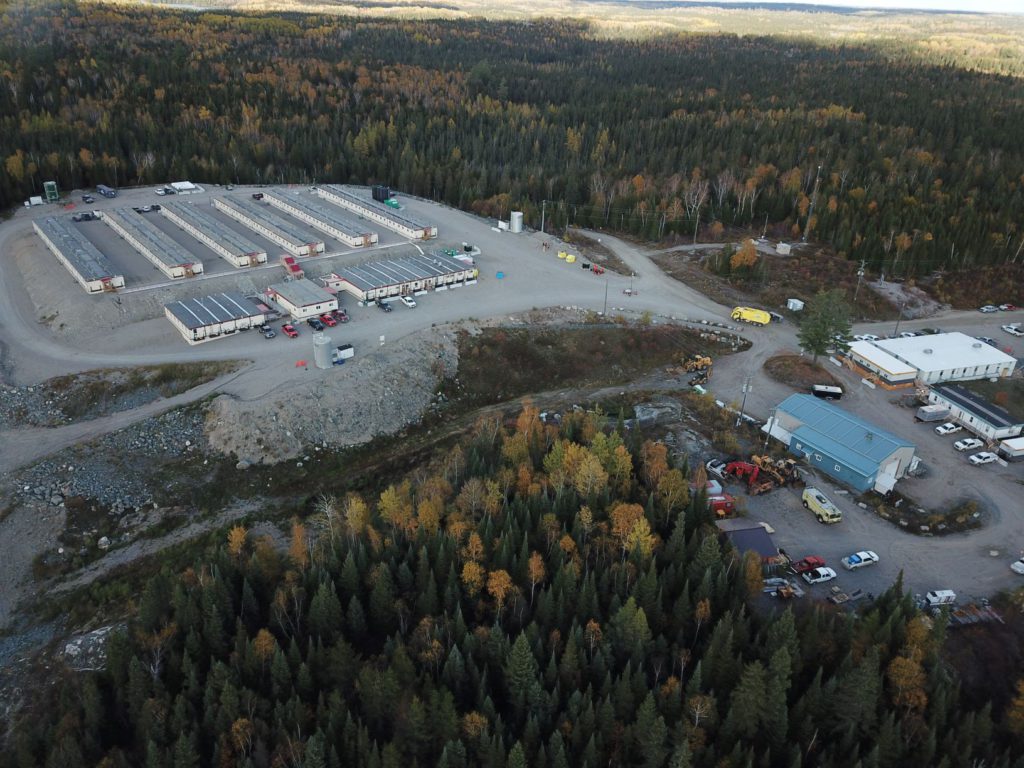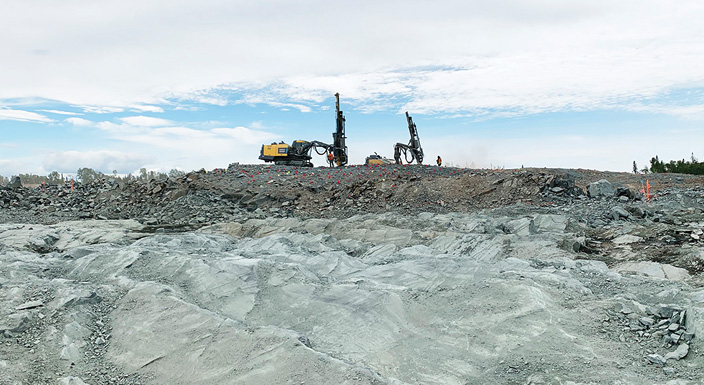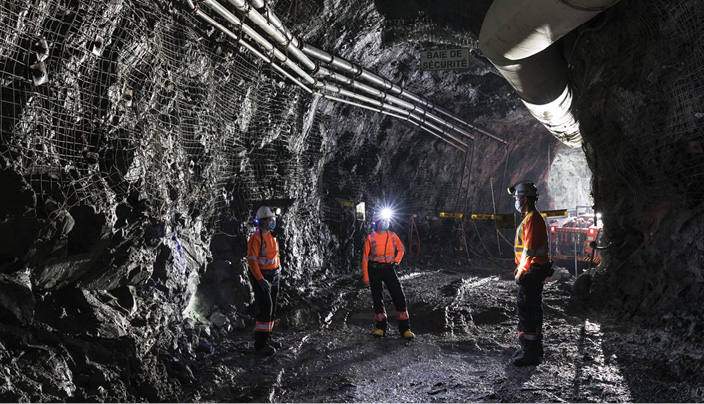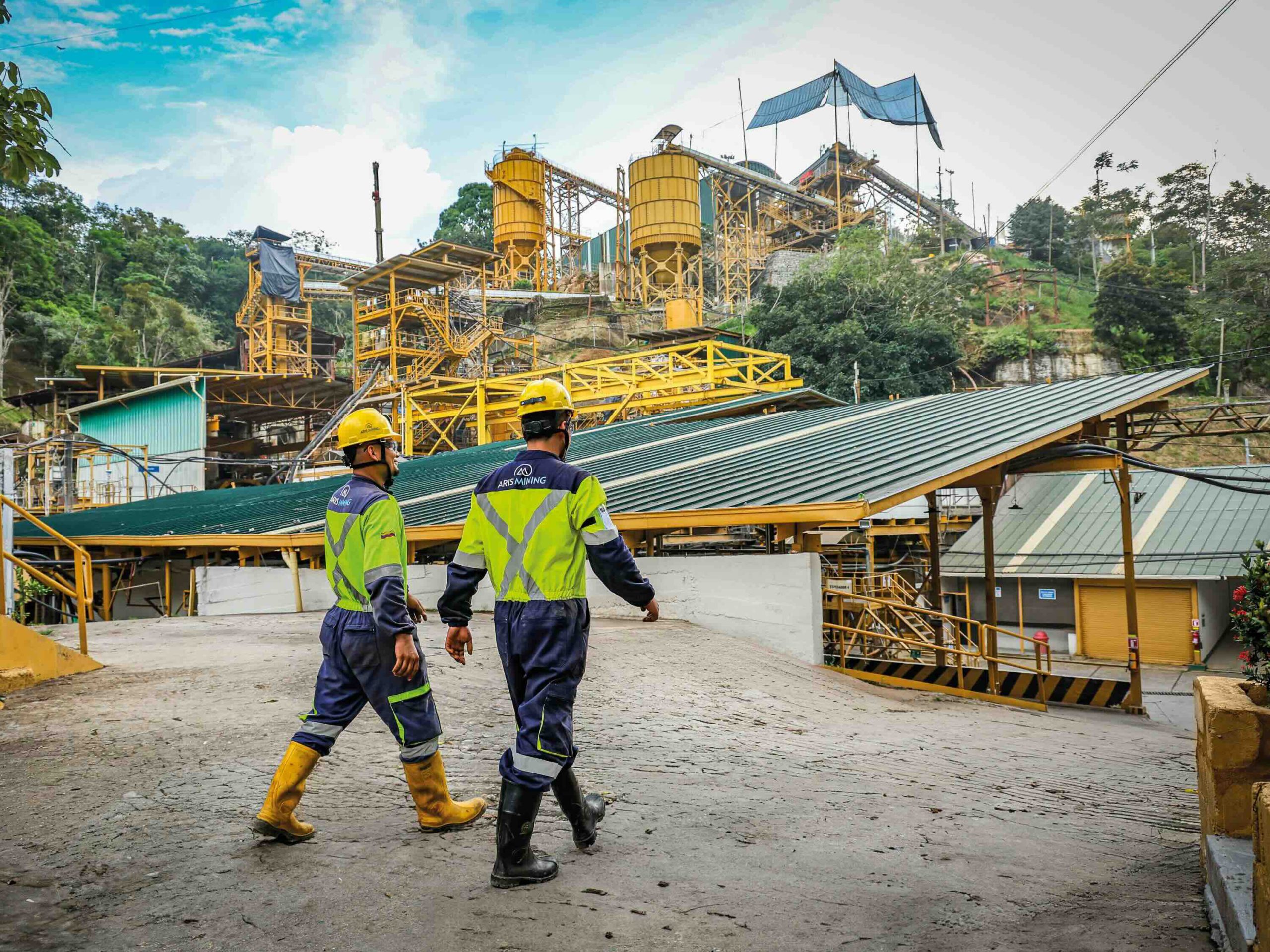Four new mines coming to Canada
Rising metals prices have kicked off exploration and mine development activity across Canada. Here’s a look at four new mines under construction in Canada – all in Ontario or Quebec – that have gotten the go-ahead in the past year.

Côté gold mine, Ontario
FIRST PRODUCTION: H2 2023
COST: Approx US$1.6 billion
MINE LIFE: 18 years
MINE TYPE: Open pit
Iamgold and its 30% partner at the Côté gold project in northern Ontario, Sumitomo Metals and Mining, announced the approval of the open pit operation last July. Construction began in the fall.
Located 20 km southwest of Gogama, in between Timmins and Sudbury, the project is slated to be Canada’s first open pit hard rock mine to employ autonomous trucks when it pours first gold in the second half of 2023. The mine will also employ fully autonomous drills. Iamgold is working with Caterpillar and Epiroc to supply the autonomous equipment.
The operation will be big, mining 62 million t/y – or 36,000 t/d – with an average mill feed grade of 0.98 g/t gold. Annual production will average 367,000 oz. gold at all-in sustaining costs of US$771 per oz. over the 18-year mine life.
While the mine’s initial capital cost was estimated at US$1.3 billion last year when construction was approved, in late July, Iamgold announced that construction costs had risen. The gold miner is now budgeting to spend US$1.1-1.2 billion for its share of costs – up from US$875-925 million estimated last year, an increase in the neighbourhood of roughly 27%.
Iamgold said the increase was driven by higher structural, mechanical, piping, electrical and concrete estimates for the process facility; higher mine facilities costs; increases in earthworks materials and manpower estimates; certain scope changes; and inflation – including pricing increases due to Covid-19 related supply chain challenges. Currency exchange rates and costs related to Covid-19 also played a part.
The project, which was 27% complete at the end of June, remains on schedule.
In addition to the initial capital investment, the JV will spend an estimated US$1.1 billion on sustaining capital over the life of mine.
Proven and probable reserves at Côté total 233 million tonnes grading 0.97 g/t gold for 7.3 million oz.
A 2018 feasibility that used a gold price of US$1,350 per oz. gold, put the project’s after-tax net present value (NPV) at US$1.1 billion (at a 5% discount rate) and its internal rate of return (IRR) at 15.3%.
The project is 92% owned and operated by the Iamgold-Sumitomo JV, with Iamgold holding a 70% interest. A third party owns a 7.5% stake.

Magino gold project, Ontario
FIRST PRODUCTION: H1 2023
COST: US$360-380 million
MINE LIFE: 17 years
MINE TYPE: Open pit
Argonaut Gold announced the green light for its Magino gold project in Ontario in October. The open pit project with a price tag of US$360-380 million, is expected to produce first gold in the first half of 2023.
Construction started at the 10,000 t/d project, 40 km northeast of Wawa, in January 2021.
While Magino will be a conventional operation, the processing plant has a very compact design, intended to reduce both its cost and its environmental footprint. In order to control costs, Argonaut went with a fixed-bid EPC contract for the processing plant. The contract, which totals 40% of the total initial project capex, was signed with Ausenco in January, and provides Argonaut protection from any cost esclation that may occur during construction.
Ausenco also completed a $10-million placement in Argonaut in March, acquiring 4.3 million of the gold miner’s shares.
A 2017 feasibility study for Magino outlined a 10,000 t/d open pit operation with a 17-year mine life, producing an average of 150,000 oz. of gold in the first five years of operation at all-in sustaining costs of US$711 per oz. The project’s NPV, at a 5% discount rate, came in at US$288 million.
While Magino will start at 10,000 t/d, the project is permitted for 35,000 t/d. Aronaut believes there is potential to first expand to 20,000 t/d with an open pit and underground operation.
Since making a construction decision for Magino, Argonaut has discovered several high-grade gold zones outside of the planned open pit. The project is located immediately west of Alamos Gold’s Island underground gold mine, in the Michipicoten greenstone belt.
At a US$1,200 per oz. gold price, Magino hosts proven and probable reserves of 58.9 million tonnes (diluted) grading 1.13 g/t for 2.1 million oz.

Odyssey gold mine, Quebec
FIRST PRODUCTION: Late 2023
COST: US$1.1 billion
MINE LIFE: 17 years
MINE TYPE: Underground – ramp and shaft access
The Odyssey project is a substantial underground extension of the Canadian Malartic mine, which produced more than 568,000 oz. gold in 2020. The Canadian Malartic Partnership, owned by 50/50 partners Agnico Eagle Mines and Yamana Gold, announced a positive construction decision in February.
The US$1.1-billion development, which includes both ramp access and a 1,800-metre, 20,000 t/d production shaft, will take about seven years to build, but it will have a 17-year mine life, extending the current mine life from 2028 out to 2039. At full production for its last 10 years, Odyssey will average 545,400 oz. gold per year at total cash costs of US$630 per oz.
As open-pit production from Canadian Malartic begins to decrease in 2023, first ore will start from the underground ramp at a rate of about 3,000 t/d.
First production from the shaft is expected in 2027, with full production of 19,000 t/d following by 2031.
As an underground development that will take advantage of an existing 55,000 t/d processing complex and other infrastructure, Odyssey will already have a relatively small environmental footprint. But it’s also planned to be a state-of-the-art electric mine, using electric equipment and ventilation-on-demand to reduce its carbon emissions and energy use. In addition, it will operate more safely and efficiently by making use of remotely operated trucks and hammers on the two main levels of the mine with loading pockets. Automation will be faciliated by the use of LTE technology. The company has not yet selected a supplier for the equipment.
Odyssey contains an inferred resource of 75.9 million tonnes grading 2.82 g/t gold for 6.9 million oz., with indicated resources totalling 6.2 million tonnes grading 2.07 g/t gold for 410,000 oz.
An internal preliminary economic assessment has been completed by the partnership. Based on a gold price of US$1,250 per oz. and a discount rate of 5%, Odyssey carries an after-tax NPV of US$481 million and an IRR of 11%. At US$1,705 per oz. gold, those figures rise to US$1.5 billion and 20%.
CMAC-Thyssen Mining Group is developing the ramp, and in engineering, the Canadian Malartic team is working primarily with WSP for the head frame and shaft, Golder for the paste backfill plant, and SNC-Lavalin for infrastructure such as the garage.

Matawinie graphite mine, Quebec
FIRST PRODUCTION: Spring 2023
COST: $276 million
MINE LIFE: 25.5 years
MINE TYPE: Open pit
After receiving a key provincial authorization in February, Nouveau Monde Graphite announced it would begin early construction works for North America’s first new graphite mine in 50 years – its Matawinie project in Quebec. Located 150 km north of Montreal, the Matawinie mine and concentrator will produce 100,000 t/y of high-purity graphite concentrate – with full-scale commercial production in 2023.
The company also has a scaleable facility in Bécancour, 150 km by road from Matawinie, that will produce 45,000 t/y of anode material and purified jumbo flake.
The mine’s product will not only support the green energy transition by supplying the battery electric vehicle and energy storage markets – but the way in which it is mined will also be notably low impact. While Nouveau Monde will start production with diesel-powered vehicles, it plans to switch to a fleet of all-electric vehicles supplied by Caterpillar in 2028, and become a carbon-neutral operation.
Although adoption of battery electric vehicles is widespread in underground mines, this would be the first wide-scale application of electric vehicles in an open pit mine in Canada. It’s not certain yet if the zero-emissions equipment will be powered by hydrogen fuel cell or lithium-ion battery electric technology.
The operation will also reduce its environmental footprint through the use of dry stack tailings to minimize water usage, codisposal of tailings and backfilling in the pit starting in year six.
Mine construction still needs to be financed, and construction contracts awarded. In late July, the company brought on financial advisors to help with the structuring and arrangement of financing, focusing on export credit agencies for a secure, lower-cost from of long-term capital.
A 2018 feasibility study for Matawinie projected an initial capex of $276 million, with a post-tax net present value of $751 million (at an 8% discount rate) and an internal rate of return of 32.2%. The study used a life-of-mine average sales price for graphite concentrate of US$1,730 per tonne, with a concentrate purity of over 97% graphitic carbon.
The project, with a 25.5-year mine life, has probable reserves of 59.8 million tonnes grading 4.35% graphitic carbon for 2.5 million tonnes.
Nouveau Monde and the Atikamekw First Nation signed a predevelopment agreement in 2019, but they do not yet have an Impact Benefits Agreement in place.





Comments